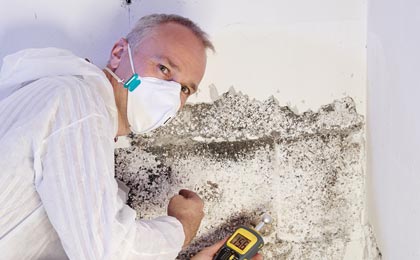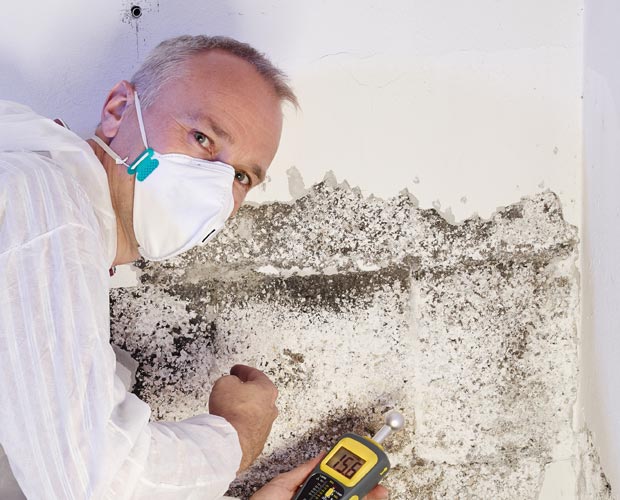
Top 5 Expert Tips to Maintain Your Home After Mold Remediation
Mold remediation is sometimes necessary to make your home free of mold. However, it doesn't necessarily put an end to your house's mold story. Once mold removal is complete, it is critical to take preventive measures to keep your home safe. In this article, we will look at ways in which mold can make a comeback and how you can ensure it doesn't.
Reasons to Care for Your Home After Mold Remediation
Caring for your home after mold remediation is crucial. It helps prevent mold recurrence and maintains a healthy environment for you and your family. Proper care preserves the value of your property and addresses underlying issues such as water leaks or poor ventilation. It provides peace of mind, knowing that you have taken steps to prevent further mold problems.
By actively caring for your home, you minimize repair costs by catching potential issues early. Regular maintenance promotes overall cleanliness, creating a safe and comfortable living space. Let's understand how to maintain your home after mold remediation.
Tips For Maintaining Your Property After Mold Remediation From Our Experts
Controlling moisture, maintaining humidity, reducing condensation, regular cleaning habits, and taking other preventive measures are critical for post-mold remediation home care.
1. Deploy Moisture Control
Any excess moisture can expose your home to mold growth. Here's how to control it:
- When there is a water spillage or leakage, make sure the damp materials are dried within 24-48 hours.
- Prevent the collection of water around the building's foundation by ensuring the ground slopes away from the foundation.
- Clean roof gutters frequently and fix any damages they may have.
- Make sure you keep the drip pans of your air conditioners clean.
Lastly, make sure there are no moisture issues such are plumbing damage or leakages inside your home.
2. Decrease the Humidity Levels
Here's how to maintain the right humidity levels to prevent mold growth:
- Keep indoor humidity levels below 60 percent (between 30 to 60 percent).
- Regularly vent appliances such as stoves, dryers, and kerosene heaters to the outdoors to reduce water vapor and humidity.
- Open the windows or use the exhaust fan when cooking or dishwashing.
- Open the bathroom window or keep the bathroom fan running during shower time.
- Use a dehumidifier or air conditioner whenever necessary.
- Humid environments are the breeding grounds for different types of mold, and it is critical to invest in a humidity meter. Fortunately, you can find it in most hardware stores for $10 to $50.
3. Reduce Condensation
Condensation can signal a high humidity level. Here's how to reduce it:
- When you notice condensation on walls, windows, or pipes, make sure you keep the surface dry and treat the moisture source.
- Increase ventilation within your home by keeping the doors and windows open whenever possible.
- Insulate cold surfaces such as cold water pipes.
Aside from targeting moisture, humidity, and condensation issues, it is critical to develop regular cleaning habits to avoid mold growth.
4. Develop Cleaning Habits
Here are some cleaning habits to shield your home from mold:
- Ensure all surfaces and floors are clean and always dry.
- Regularly vacuuming crumbs from all areas.
- Clean spills or food splatters immediately.
- Wipe the dining table and clean the dining area after each use.
- Wipe the bathtub or the shower area after every use.
- Keep the AC dry after every cleaning process.
When mold spores fall on damp areas and begin to feed on organic materials like wood-paneled walls, food crumbs, or plant fibers, the result is a rapid growth of mold. On the other hand, spores can never develop into mold colonies when your home is clean and dry.
5. Other Preventive Actions to Take
Regular cleaning habits can ensure mold spores that enter your home don't transform into mold colonies. But how can you reduce the number of spores that get indoors?
- Get rid of any dust from your shoes or clothes before entering your house.
- If you purchase second-hand furniture, make sure it is professionally cleaned outside first.
- Since dust is a significant source of mold, make sure you replace your AC filters regularly.
- Invest in construction materials that resist mold. These could include fiberglass insulation in mold-prone areas and moisture-resistant drywall.
A great way to monitor mold growth would be to monitor humidity levels. Place humidity meters in your attic, basement, and other spaces that may be vulnerable to mold.
What To Do If Mold Has Returned After Mold Remediation?
What to do if you detect mold again in your home? The effectiveness of mold remediation depends on the experience of the professional services you hired. In most cases, mold can make a quick comeback if your specialists fail to fully fix the root cause of the mold problem.
If you notice signs of mold growth, make sure you request post-mold remediation testing. It typically involves air quality checks that gauge the mold contamination and humidity levels in the house. If the testing points to a remediation failure, chances are, your previous remediators missed certain mold spots.
When detected sooner, it is easier to remediate the mold from a home. Because mold can spread in the blink of an eye, it's critical to reach out to a professional, certified, and trusted mold removal service like Mold Act immediately. Through comprehensive inspection and remediation, we can ensure your house will be mold-free. We will not only make your house safe again but also give you valuable information to ensure mold never knocks at your door again.
What Are the Benefits of Using Professional Services for Mold Removal?
Mold spreads quickly and certain mold spots are easy to miss. When you attempt to remove the mold yourself, you can disturb the airborne spores. This can then lead to mold growth in other areas of your home.
Mold may be present in hidden areas you might not even imagine. In many cases, mold is invisible to the human eye. You may think you've addressed the situation, but in fact, mold can continue to grow in the background.
Mold removal requires special equipment such as HEPA vacuums, air filters, special PPEs, and other industrial products. Mold removal also requires professional training and certifications. For instance, each of our specialists has an IICRC certification.
Let Mold Act's Professional Services Make Your Home 100% Mold-Free
The return of mold post-remediation can be a nightmare for homeowners. However, it is critical to address the issue before a full-blown mold attack takes over your home and health.
At Mold Act, we treat every mold affected property as if it's our own home. Equipped with the right equipment, experience, expertise, certifications, and licenses, we will rid your home of mold once and for all. We're at your service 7 days a week and can guarantee that you will experience 100% satisfaction with our services.
If you're looking for a trusted mold removal partner, reach out to us immediately!



Mold Remediation Services

